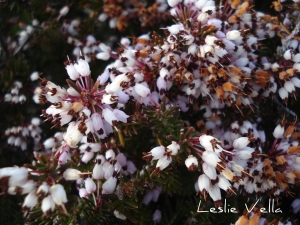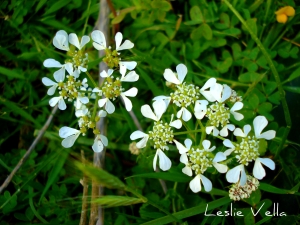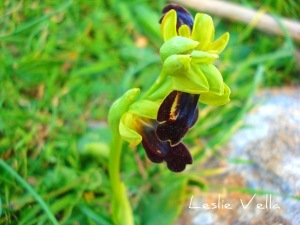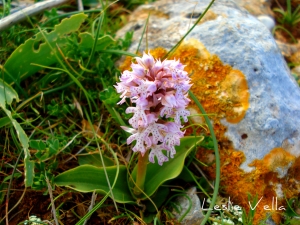Winter flowers on the windswept cliffs of Dingli
The Dingli Cliffs in the west of Malta rise over 800 feet above sea level and contain the highest points on the island. Due to their height and exposure the cliffs usually bear the brunt of the prevailing north-west wind, the Majjistral, which generally tends to be a cruelly cold wind in winter and a welcome cool one in summer.
This evening I managed a quick 60 minute dash to the cliffs in search of some early flowering species before the spring riot of wild flowers and was rewarded with a beautiful variety of species, including three new ones that I had never managed to observe before.
The first floral species I chanced upon was the wild clary sage (Salvia verbenaca) known as salvja selvagga in Maltese. Although it is classified as a separate species, it is obviously a wild “cousin” of the domestic sage grown in our gardens. This was my first ever observation of this tiny but beautiful plant whose leaf and flower are used to enhance salads in nearby Italy.
Walking along the uneven karst surface of the garigue I passed numerous clumps of the very common Mediterranean heather (Erica multiflora), known as erika in Maltese. The pale pink, dark tipped floral clusters of this low bushy plant provide a beautiful spectacle in the relatively bleak wintry landscape. This richly flowering plant is reputed to be very attractive to honey bees.
Crossing the coastal road to a stretch of garigue which was once an enclosed field which has since lost most of its soil cover, I came across my first ever experience of the delicate white flowers of the Mediterranean hartwort (Tordylium apulum), known in Maltese as the haxixet it-trieraq. This plant is related to the carrot family and although common I had never managed to notice it in my countryside forays. The ground in the degenerated field was teeming with these beautiful specimens which are best enjoyed close-up as in the picture above.
My big surprise of the day came in the form of a solitary Brown orchid (Ophrys fusca), known in Maltese by the highly descriptive if not demeaning name of dubbiena or fly due to its similarity to the winged pest. Maltese orchids are not huge in size and tend to be very elusive to the point of being missed by most. But once you adjust your eyesight to the relevant scale you start seeing them where there was nothing before. Although the brown orchid is apparently a relatively common species, this was my first ever observation of its kind: a joyful experience reminiscent of the reaction of a collector who has just added a rare item to his collection! My search for other specimens of this orchid were fruitless so I consider myself very lucky to have witnessed this tiny but beautiful plant when I could have just as easily bypassed it.
The last floral species I witnessed on this short sojourn to the cliffs was another type of orchid, of which there were numerous specimens scattered around the landscape. This orchid, which is either the Conical or Milky orchid (due to their almost perfect similarity) is known in Maltese as the orkida tat-tikek or the spotted orchid due to its beautiful pattern of pink dots on the delicate white petals. Of all the photos of the different specimens I captured on this trip, my favourite is the one above with the full cluster of flowers contrasting against the backdrop of a lichen encrusted rock.
So all in all quite a rich harvest of beautiful and natural works of art at a time of the year when most of our northern neighbours are still weeks away from even dreaming of flowers re-emerging from their cold and desolate landscapes.




